#Gambel's quail
Text


Gambel's quail / cordoniz de Gambel (Calipeppla gambelii) at Desert Botanical Garden. That's Papa Quail at top, and a gangly-awkward juvenile below.
621 notes
·
View notes
Text

peent
#woodcock wednesday#get held idiot#ornithology#birblr#traditional art#sketchbook#who farded#american woodcock#cackling goose#budgerigar#blyth's rose finch#gambel's quail#timothy jimothy bubs#PEENT#feeb
351 notes
·
View notes
Text

a couple of quails
148 notes
·
View notes
Photo
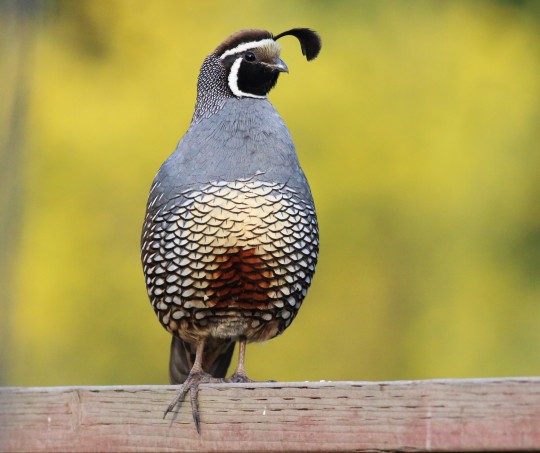
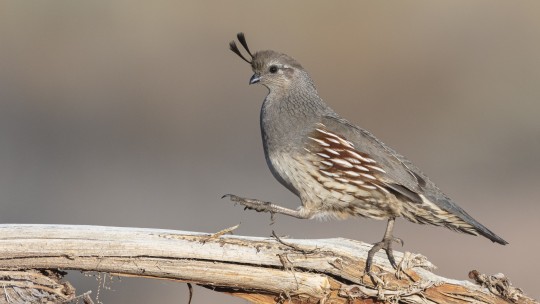
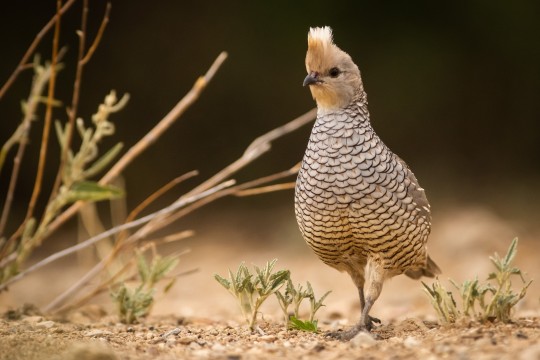

Quails in the genus Callipepla - california, gambel’s, scaled and elegant
Photos from Macaulay Library: Paul Fenwick - ML54069561 | Brandon Nidiffer - ML389091521 | Antonio Robles - ML203833111 | Bryan Calk - ML197015331
928 notes
·
View notes
Photo

Gambel’s Quail - Arizona
Photographer: Jason Polak
234 notes
·
View notes
Text
And now, some desert borbs.
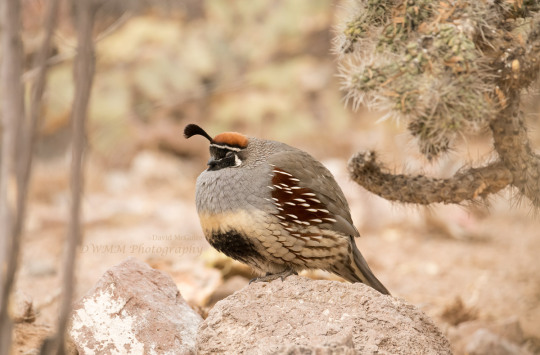
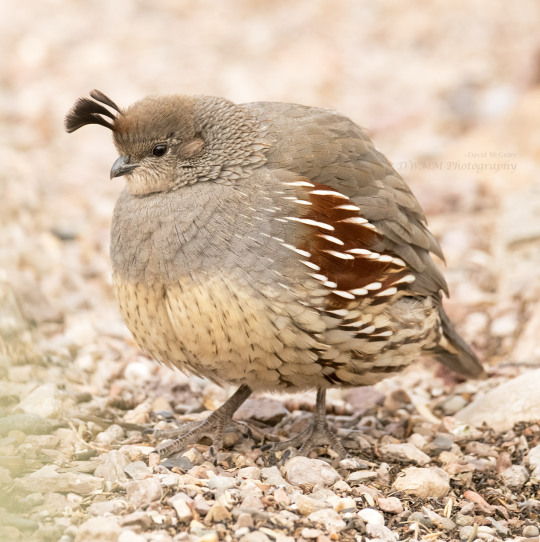
Gambel's quail.

And that most iconic of desert borbs (southwestern USA), the greater roadrunner.
#borb#bird#bird photography#gambel's quail#quail#greater roadrunner#roadrunner#bosque del apache#national wildlife refuge#abqbiopark#roadrunners are cuckoos#but not nest parasitic cuckoos#new mexico birds
217 notes
·
View notes
Text

#gambel's quail#quail#bird photography#nature photography#birds#cottagecore#gardencore#photography#naturecore#nature#animals#animal photography#orthinology#do not upload on other sites/steal
43 notes
·
View notes
Text

Yeehawgust: Day 6 Wide Open Spaces
56 notes
·
View notes
Text
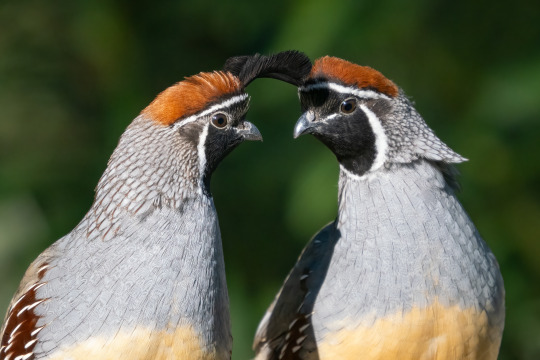
Gambel's quails (Callipepla gambelii)
40 notes
·
View notes
Text
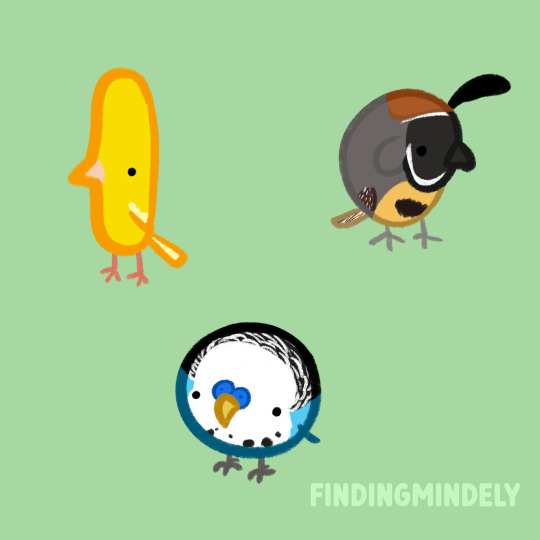
Symbol and letter birbs
#art#drawing#digital art#animals#sketch#digital sketch#nature#cute#illustration#procreate#birds#digital illustration#birb#birbs#budgie#budgerigar#parakeet#quail#gambel's quail#canary
99 notes
·
View notes
Text
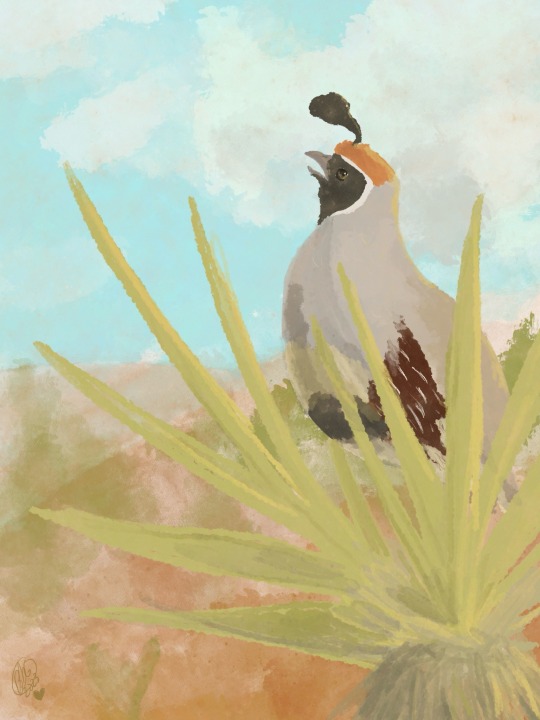
art i did for me dad
22 notes
·
View notes
Text

Looking
25 notes
·
View notes
Text
Animal of the Day!
Gambel’s Quail (Callipepla gambelii)
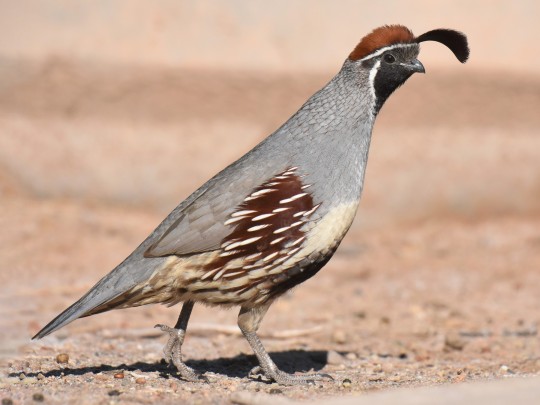
(Photo by Jason Vassallo)
Conservation Status- Least Concern
Habitat- Southwestern United States; Mexico
Size (Weight/Length)- 200 g
Diet- Leaves; Fruits; Seeds; Insects
Cool Facts- The Gambel’s quail is a species of ground quail that is surprisingly speedy despite their short legs. While both sexes have their iconic topknots and scaly looking wings, only males have their brilliant facial markings. Being monogamous, during the fall juvenile males will start courting females. Finding a high spot, such as a large rock, bush, or the top of a cactus, the males stretch their heads out and coo. After winning over a mate and raising a family, the chicks often stay with their parents to raise the next generation of their siblings before splitting off.
Rating- 12/10 (My Coturnix have made me love all quail species.)
#Animal of the day#Animals#Birds#Quail#Saturday#November 26#Gambel's quail#biology#science#conservation#the more you know
168 notes
·
View notes
Photo
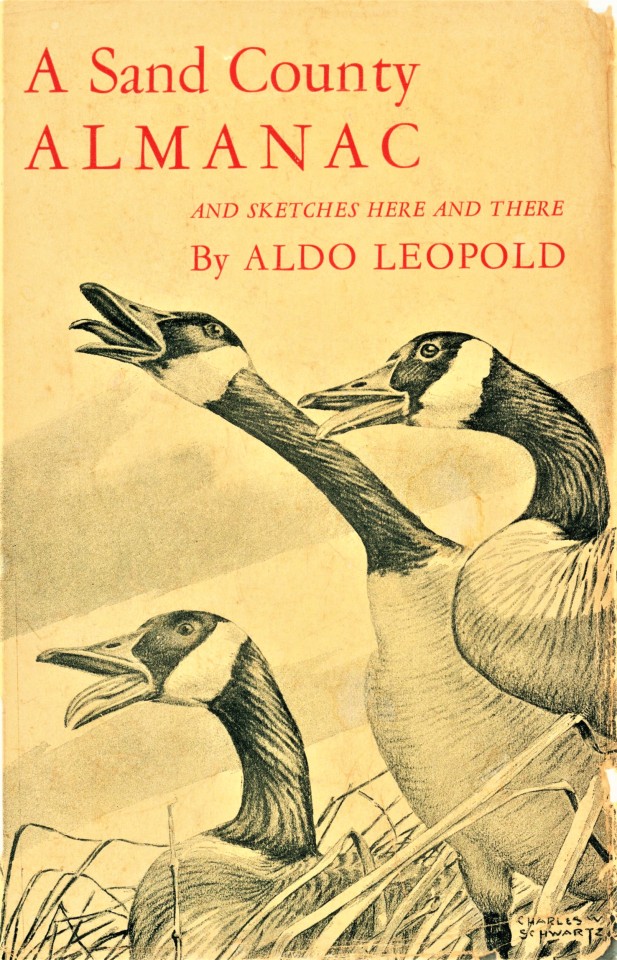
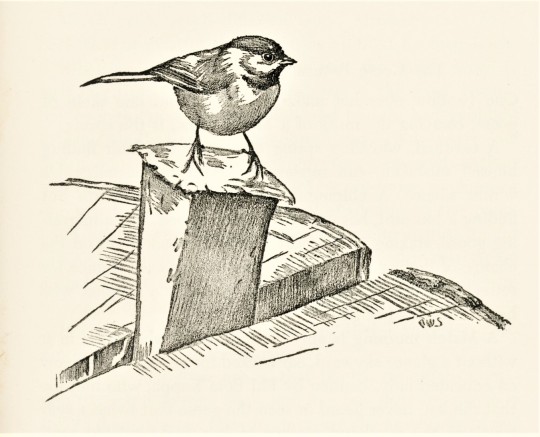





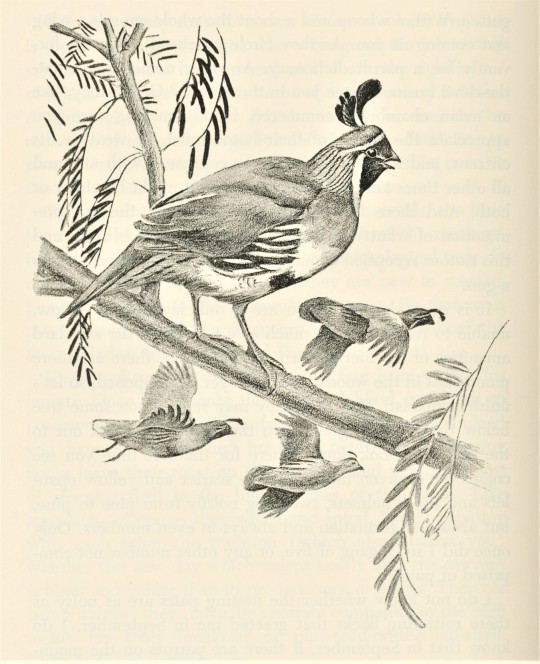
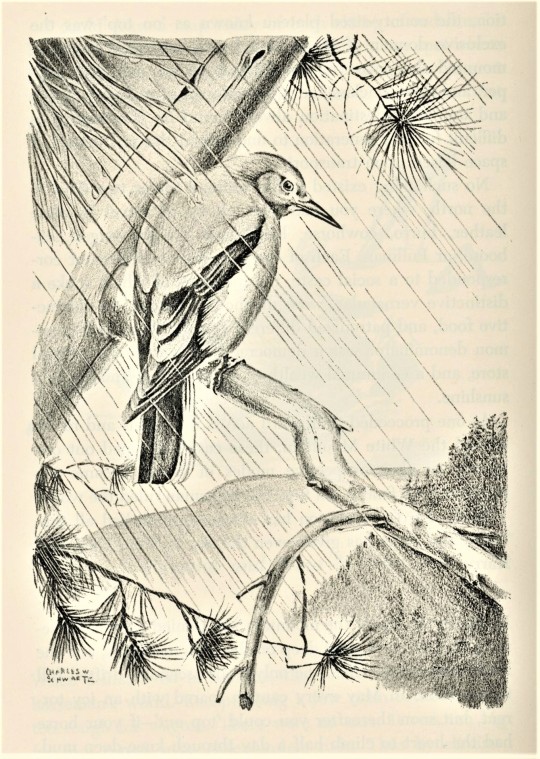
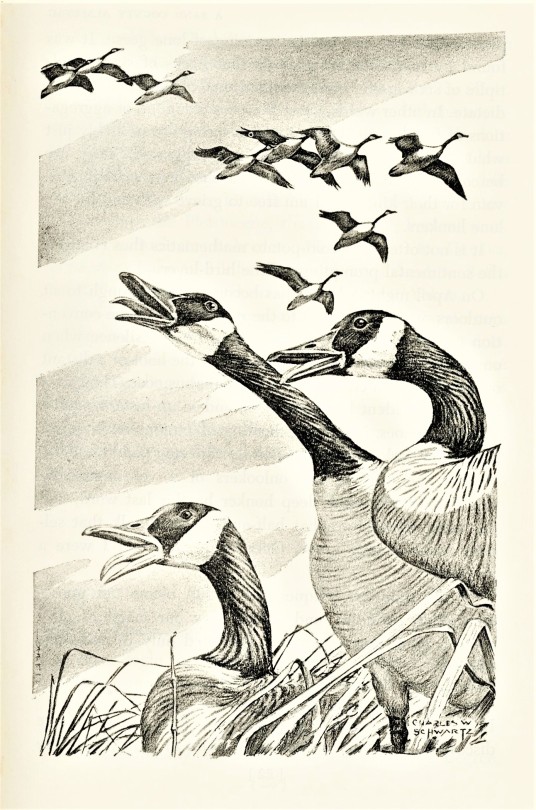
A Sand County Feathursday
One of the most noteworthy books to come out of Wisconsin is A Sand County Almanac by the equally noteworthy Wisconsin naturalist and conservationist Aldo Leopold (1887-1948). Considered a landmark in the American conservation movement, A Sand County Almanac is a collection of essays mainly concerning the land around Leopold’s home in Sauk County, Wisconsin, that advocates the author’s idea of a "land ethic," or a responsible relationship between people and the land they inhabit.
Our copy is a first edition published in New York by Oxford University Press in 1949 with illustrations by the American wildlife artist and fellow conservationist Charles W. Schwartz (1914-1991). The book was published a year after Leopold’s death so he never got to witness its significant impact on the conservation and environmentalist movements.
Schwartz made a special emphasis on depicting the avian inhabitants of Sauk County, and we show a few of those images here that include Canada Geese (Branta canadensis), Black-capped Chickadees (Poecile atricapillus), American Woodcocks (Scolopax minor), and a Mallard (Anas platyrhynchos). A couple of other species shown here are from Leopold’s visits to Mexico and the American southwest, Gambel's Quail (Callipepla gambelii) and Clark’s Nutcracker (Nucifraga columbiana).
The image of the chickadee being annoyed by its newly banded leg has a particularly charming description:
65290 was one of 7 chickadees constituting the ‘class of 1937.’ When he first entered our trap, he showed no visible evidence of genius. Like his classmates, his valor for suet was greater than his discretion. Like his classmates, he bit my finger while being taken out of the trap. When banded and released he fluttered up to a limb, pecked his new aluminum anklet in mild annoyance, and hurried away to catch up with the gang. It is doubtful whether he drew any philosophical deductions from his experience, . . . for he was caught again three times that same winter. . . . By the fifth winter 65290 was the sole survivor of his generation. Signs of genius were still lacking, but of his extraordinary capacity for living, there was now historical proof.
Our copy of A Sand County Almanac is from the collection of another heralded Milwaukee-area environmentalist and activist, Lorrie Otto.
View more Feathursday posts.
#Feathursday#Aldo Leopold#Charles W. Schwartz#A Sand County Almanac#Oxford University Press#Canada Goose#Black-capped Chickadee#American Woodcock#Mallard#Gambel's Quail#Clark's Nutcracker#Lorrie Otto#wildlife art#bird art#birds#birbs!
339 notes
·
View notes
Video
IMG_0013 by Henry
Via Flickr:
Black crown night heron
#Bird#Birds#Canon#Nature#Vermillion fly catcher#Black crown night heron#Juvenile black crown night heron#Gambel's Quail#flickr
8 notes
·
View notes
Photo


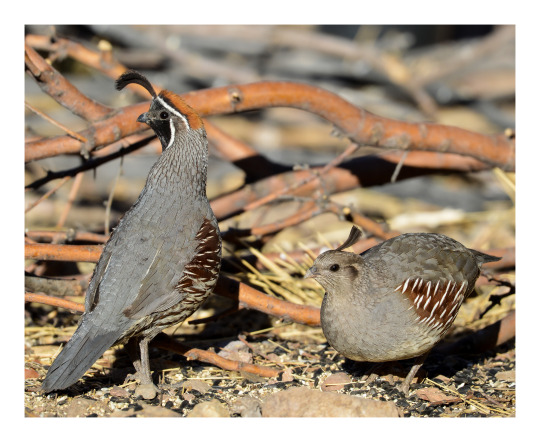
Gambel’s quail / codorniz de Gambel (Callipepla gambelii).
At Ash Canyon Bird Sanctuary, Cochise County, Arizona.
#photographers on tumblr#birds#birding#Gambel's quail#Callipepla gambelii#Ash Canyon Bird Sanctuary#Southeastern Arizona Bird Observatory#Cochise County#Arizona
254 notes
·
View notes
